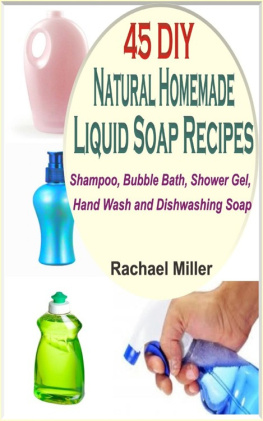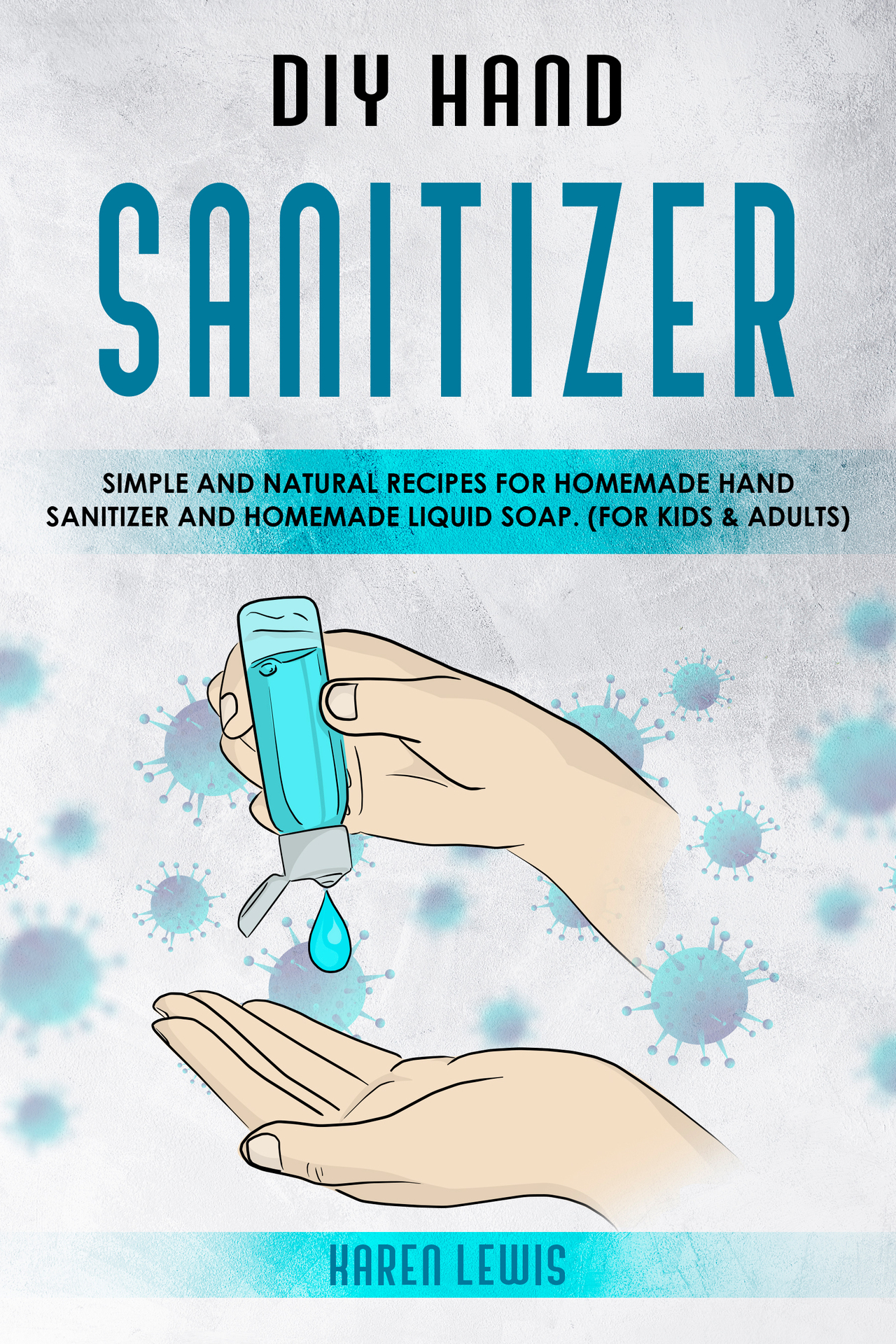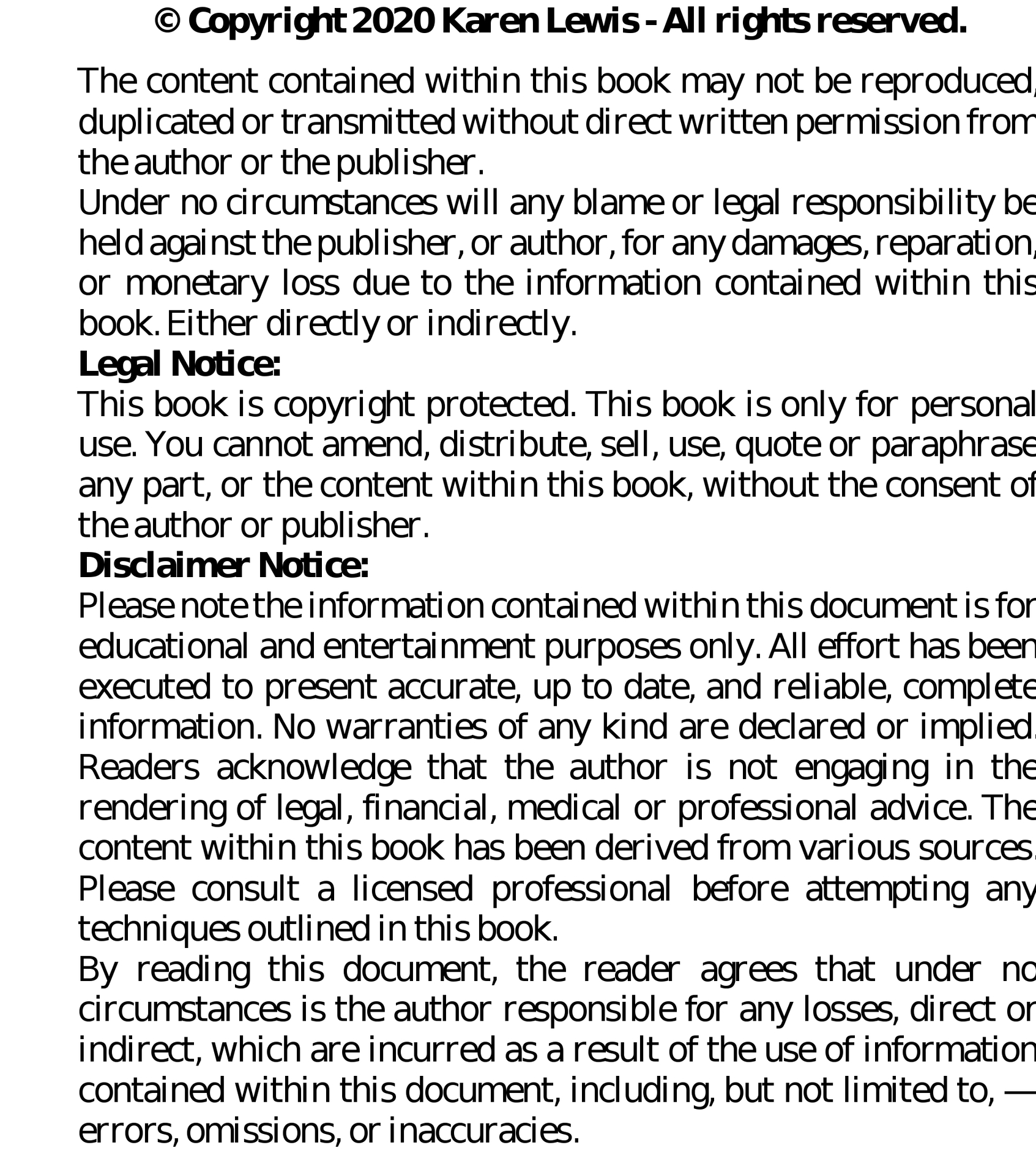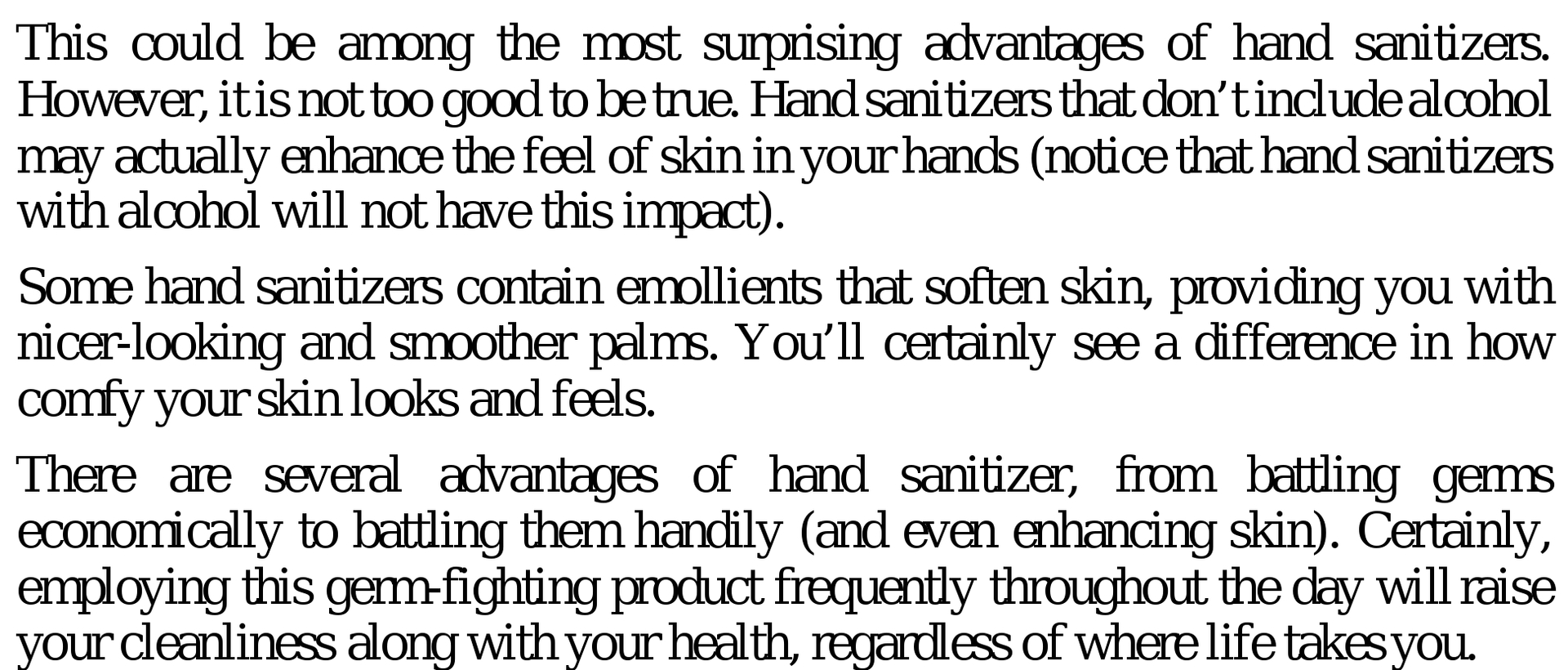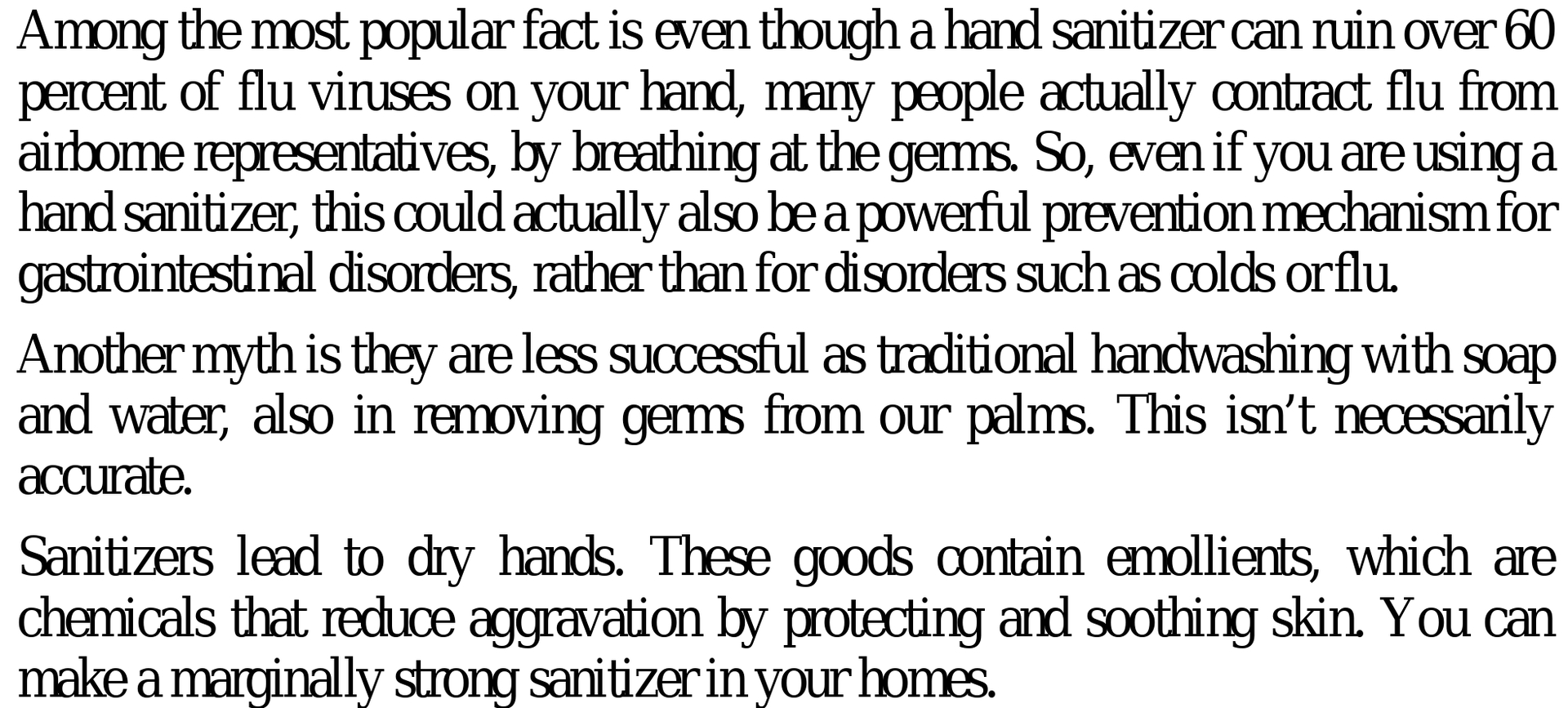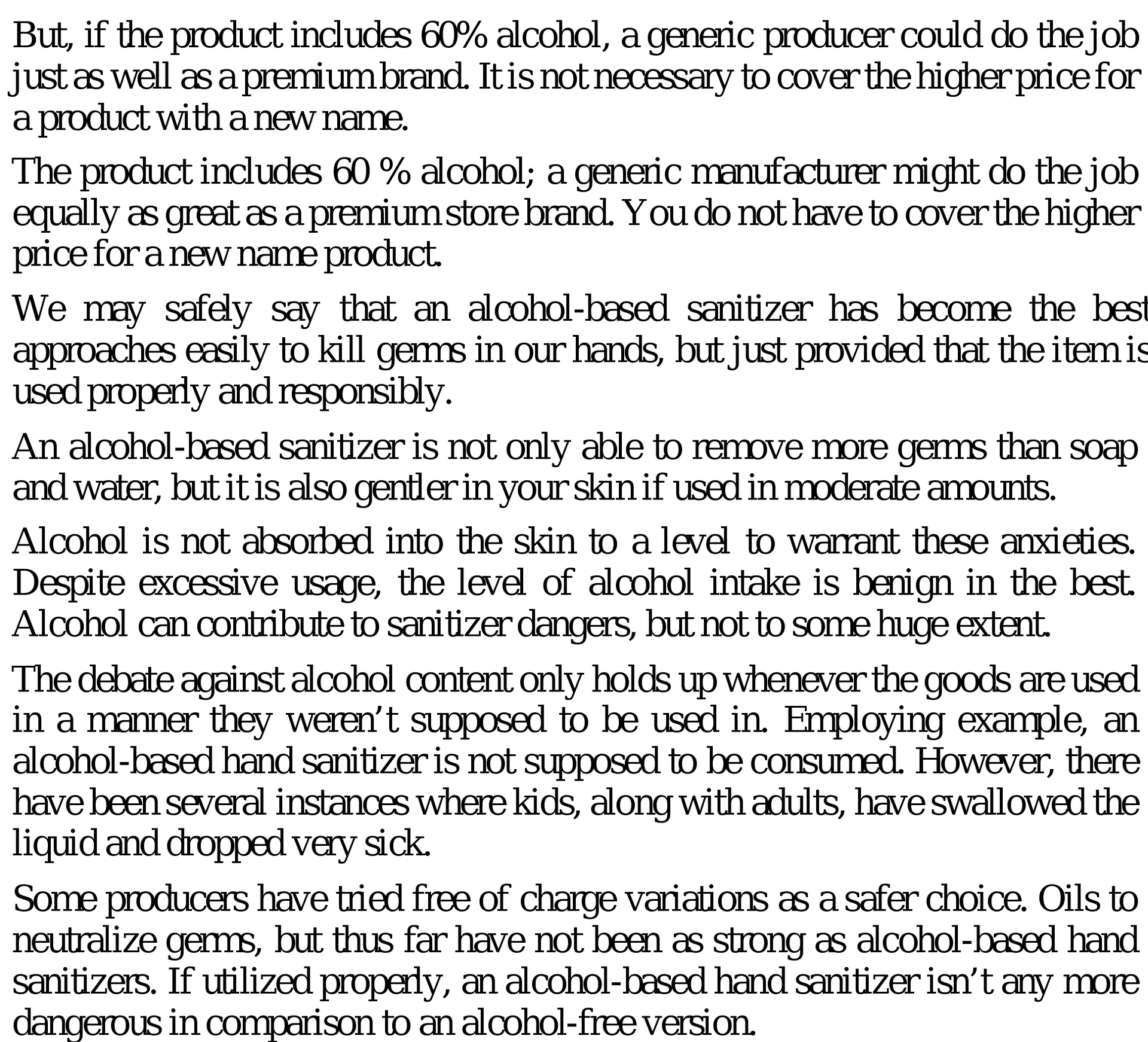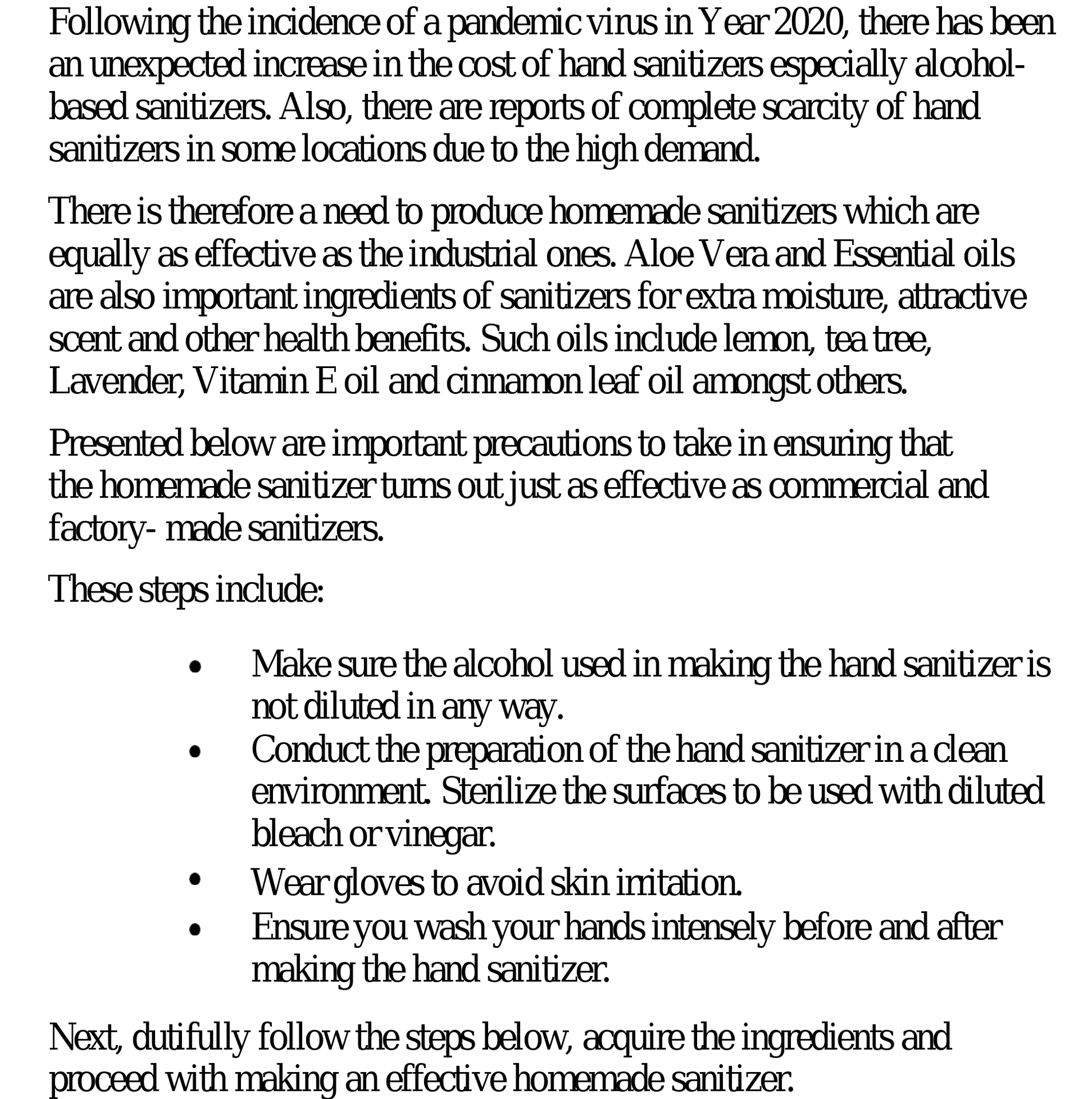Step by step procedure to wash your hands
Make use of Hand Sanitizer When Soap and Water is not available
Introduction
Thank yo u , for choosing this book. below you will find the right methods and ways to make real homemade recipes
Regards, Karen L.
Chapter 1: WHAT IS A HAND SANITIZER?
Reasons for the usage of hand sanitizers
Cleanliness
Portability
Great for group settings
Less risk for disease
Softer-feeling hands
Hand Sainitizer can protect us from ?
Germs that cause things such as colds, strep throat, and other common ailments are responsible for the people seeking medical attention. These diseases also cause discontinuing work, college, and overall productive moments.
Many sanitizers are alcohol-based. Its made to be utilized when more conventional soap and water techniques of cleansing arent available. When you put a small amount on your hands and operate the remedy in, voila, the bugs have been killed.
The alcohol at the hand wash triggers the walls of tissues to break down along with the virus or bacteria expires. It works in touch but doesnt provide you with continuing coverage. These regions contain surfaces like supermarket shelves, doorknobs, things at a shop that many others have touched, the cell telephone, and the list continue.
Sanitizers have lashes in them to help stop the alcohol from drying out the skin. Its as simple as putting on cream. This item comes in many different delivery methods. All are equally powerful. None need for towels or water.
You care about your environment and use soap washing, followed by regular hand washing with traditional hot soap and hot water. It is not suitable for palms that are soiled with visible dirt or other materials. If youre likely to be touching food items, you ought to use the gel and then wait for a whole 15 seconds for it to achieve maximum efficiency. You still will need to regularly clean your hands with warm soap and warm water into the very best germ coverage for you and your family.
Most of us dont wash our hands completely sufficient to prevent germ transmission. Water is not an alternative; both the FDA and CDC recommend a hand-held, called hand sanitizer having an alcohol content of at least 60 percent to work against the germ.
Harmful germ transmission, however, its surely harsh on the skin. To fight the drying effect of alcohol, several have an additional aloe and vitamin E that assist in healing and soothing the skin. Another, not so renowned ingredient, is known as dimethicone.
It helps not only to cure but protect against irritation of the skin. Also, it can be present in diaper rash ointments. Hand sanitizer is in spray, gel, and foam forms. The gel takes a bit more time to wash than alcohol, and foam is not completely successful until its permitted to stay on the skin for 15 minutes Therefore, I favor gel to foam because of this.
There are a few additional Alcohol was used safely for several decades, so I would rather stay with the tried and true, as well as also the FDA and CDC recommendations everywhere. There are positive and negative germs, and we want both. Superior bacteria, known as resistant flora, is useful bacteria found in the skin and in our intestinal tracts. Superior bacteria help stop bad bacteria from multiplying and causing us ill. Bad bacteria, known as pathogens, trigger illness, parasites, and viruses.
The CDC recommends appropriate washing Of hands or a hand peppermint before eating, cooking, tethered to your baby, Helping the elderly or people with compromised health, administering health It is suggested that you wash or utilize hand antiseptic following using the restroom, diaper changing, taking out crap, picking up after a puppy, coughing and coughing, and managing raw food.
Misconceptions about hand sanitizers
Chapter 2: METHODS OF MAKING HAND SANITIZER
Method 1
INGREDIENTS
- 1/2 cup of isopropyl alcohol (91% or higher)
- 1/3 cup of Aloe Vera gel
- 10 drops of lemon essential oil
- 5 drops of spearmint oil
- 2 tablespoons of glycerine
- 3 drops of Vitamin E oil
- Mixing bowl
- Spoon, Funnel and Clean Plastic bottle
PREPARATION
- Mix Alcohol and Aloe Vera gel in the mixing bowl. (You can vary the quantity of the Aloe Vera to achieve desired thickness)
- Add the oils and stir.
- Pour into plastic container with the funnel. Shake well before use.
Method 2
INGREDIENTS
- 1 cup pure Aloe Vera gel
- 1/2 teaspoons Witch hazel
- 12 drops tea tree oil
- 4 drops eucalyptus radiata essential oil
- Mixing bowl
- Spoon and Funnel
- Clean Plastic bottle
PREPARATION
- Mix Aloe Vera and Witch Hazel in a bowl. Add the oils and stir.
- our into the plastic container preferably with funnel Shake before each use
Method 3
INGREDIENTS
- 1/2 cup of grain alcohol ethanol (70% or higher)
- 1/4 cup of Aloe Vera gel
- 8 - 10 drops of lavender essential oil
- 5 drops of cinnamon bark oil
- 2 tablespoons of glycerine
- 3 drops of Vitamin E oil
- Mixing bowl
- Spoon / Spatula and Funnel
- Clean Plastic bottle
PREPARATION
- Pour all the alcohol in a bowl. Add the Aloe Vera and then the oils (You can vary the quantity of the Aloe Vera to achieve desired thickness)
- Add the oils and stir until the ingredients are well-combined and the mixture is smooth.
- Pour into a clean bottle with pump or squeeze top using a funnel.
- Close the bottle lip and shake the bottle to finish the preparation of the sanitizer
- Shake well before use.









